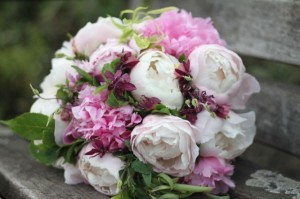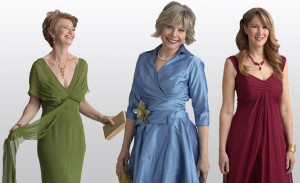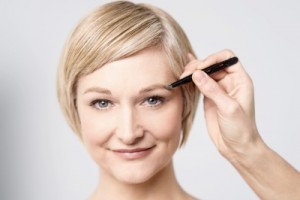 With all the hoopla surrounding the wedding planning process, it can be easy to overlook the small details that can make the difference between good and great. One such detail is the bride’s wedding bouquet. This may seem like a relatively minor detail compared to more important things like the venue, dress, wedding cake, etc. But for a bouquet to look its absolute best, it must be the right color, shape and size to compliment the wedding dress. Otherwise it will either blend in too much, or at the opposite end of the spectrum, completely overpower the dress. The bottom line is that since the bouquet is the main accessory for the wedding dress, it is important to carefully weigh your options.
With all the hoopla surrounding the wedding planning process, it can be easy to overlook the small details that can make the difference between good and great. One such detail is the bride’s wedding bouquet. This may seem like a relatively minor detail compared to more important things like the venue, dress, wedding cake, etc. But for a bouquet to look its absolute best, it must be the right color, shape and size to compliment the wedding dress. Otherwise it will either blend in too much, or at the opposite end of the spectrum, completely overpower the dress. The bottom line is that since the bouquet is the main accessory for the wedding dress, it is important to carefully weigh your options.
Wedding bouquets are typically made from fresh flowers, but they can also be constructed from brooches, feathers, jewelry, bows and ribbons, pinecones, buttons, paper, felt, seashells, synthetic or silk flowers, and pretty much anything else you can imagine. So the first step in your decision-making process is to decide what material your bouquet will be made from. If you opt for a traditional flower bouquet, keep in mind that some types of flowers are only available at certain times of the year. Thus, for a winter wedding you’ll need winter flowers such as carnations, amaryllis, poinsettias, tulips, ranunculus, etc. Similarly, for a destination wedding it is usually best to choose bouquet flowers that are indigenous to the location.
The second step is to figure out how large you want the bouquet to be, and this mainly comes down to common sense. For example, if you are petite, then you’ll want a smaller bouquet. Bouquet styles that are smaller include the nosegay (about 16 inches in diameter) and posy. Be careful to choose a size that does not conceal your waistline. For brides with more girth, larger is obviously going to be better. These same simple principles apply to the expansiveness of the dress as well – for example, larger dresses with full trains will generally require larger bouquets. Same goes for the venue – a large and spacious venue, or an outdoor venue, will typically demand a larger bouquet.
The third step is to determine the ideal shape. The most traditional bouquet shape is round, but they can also be oval, heart-shaped, loose (a simple arrangement of flowers bound together), crescent-shaped, teardrop-shaped, or cascade- or waterfall-shaped. There is also something called a pageant bouquet which features long elegant stems that are typically carried across the arms. Round bouquets are the best choice for traditional or plus-sized dresses. This shape has the added advantage of flexibility, as it can work with a wide variety or dress styles and venues. A loose bouquet is best for more casual weddings – such as a beach wedding or an outdoor wedding. A crescent-shaped bouquet is best for more natural or rustic settings. Cascade, oval and pageant bouquets tend to work better in more formal settings.
The forth step is to determine the color. Generally speaking, if you plan to have a white wedding, you have the liberty of choosing any color you wish. That said, you’ll want the color scheme to mesh nicely with the venue, the bridesmaids dresses, and any other visceral element of the wedding. It’s also usually preferable to have several colors featured within the bouquet as opposed to a single color. If you plan to wear a different color wedding dress, you have a few general options. One is to have a bouquet that is the same color but in a different shade (i.e., monochromatic colors). Another option is complimentary colors such as pairing an orange and yellow bouquet with a red dress (i.e., analogous colors). And don’t forget about your accessory, nail and makeup colors when making the bouquet color decision.
To sum it up, the 4 factors you will need to consider when choosing the best wedding bouquet for you are the material, size, shape and color scheme. Pay careful attention to how these factors synergize with your dress, venue, location, etc. If you feel unsure about how to determine the perfect wedding bouquet for you, visit a couple local florists and ask for their expert opinions; people love to give advice, and you’ll be surprised at how much valuable information can be gleaned from asking a simple question. For further ideas, check out this fabulous photo gallery from theknot.com that offers tons of inspiration for wedding bouquet ideas. Immediately below is a video for even more inspiration. Enjoy!



Speak Your Mind